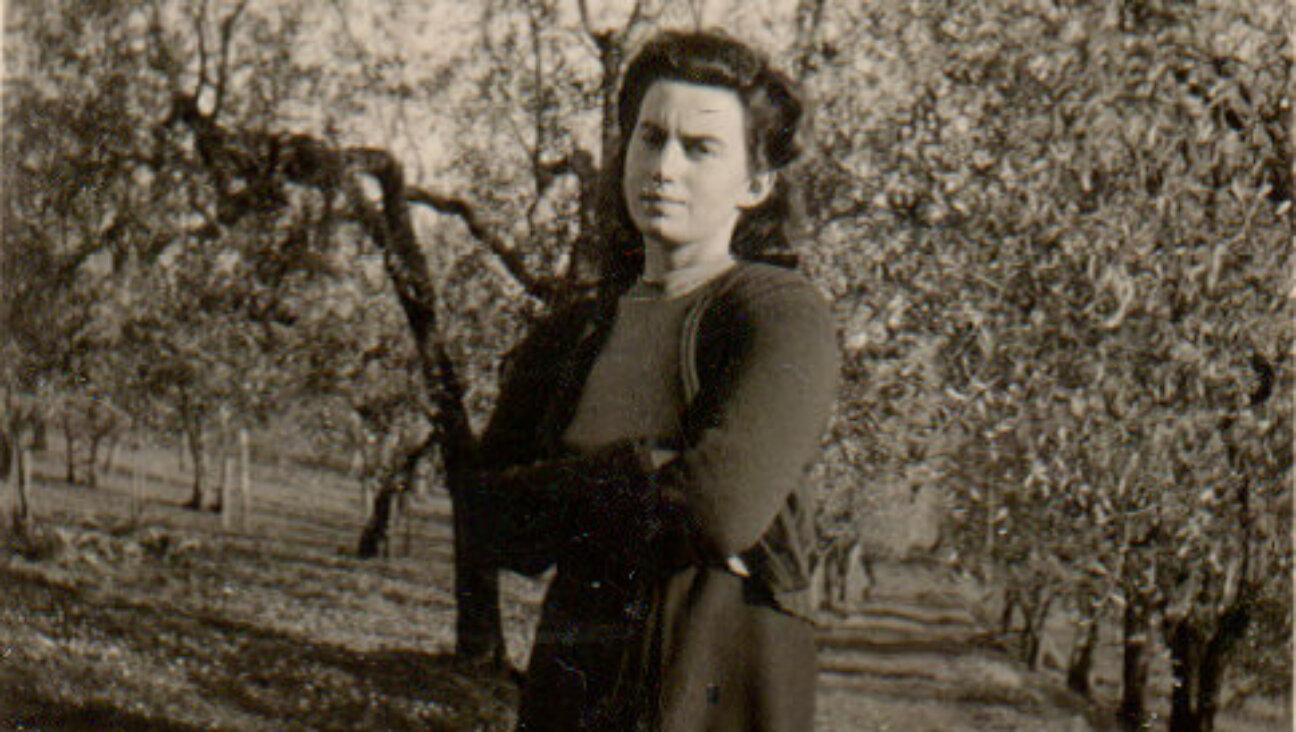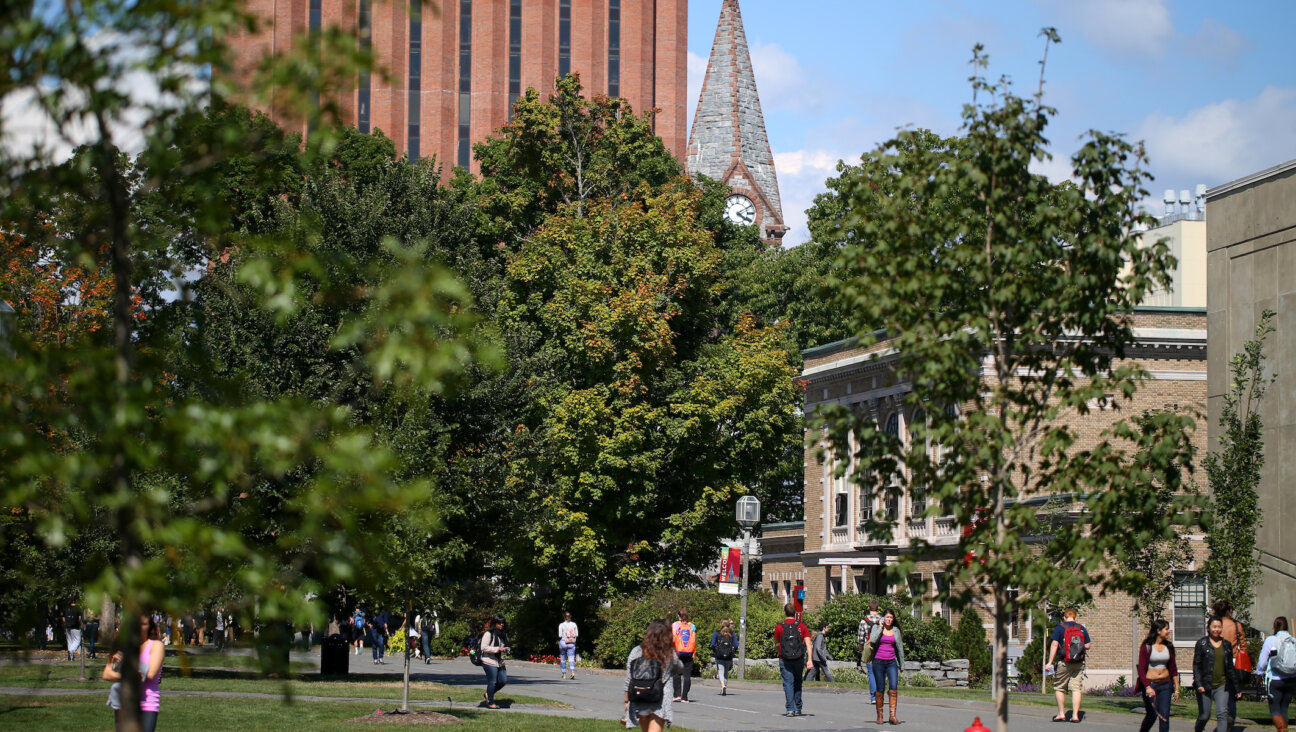How to host a Seder when everyone is talking past each other and strongly disagrees about the war
This Passover comes at a painful moment in Jewish history, but the Haggadah is made for such moments

A seemingly peaceful Passover seder table. Photo by Getty Images
Last week, a friend of mine emailed me to say, “I’m hosting the first night of Passover, and I have some folks coming from different generations and with vastly different perspectives on Israel. I’m trying to put together some appropriate readings or passages to use during the seder. Do you have any thoughts?”
I do — and I bet a lot of folks are facing similar challenges. After all, while political disagreements at the Seder/Thanksgiving/Every Other Holiday table aren’t new, this year really is different from other years. Obviously.
Whatever our political views, American Jews and our extended friends and family are hurting – many of us are, without exaggeration, traumatized. It’s remarkable, really, how the reasons for that pain can be diametrically opposed to one another, but the pain, anger, and moral outrage can be virtually identical. I’ve seen it myself; often when I get an angry response to something I’ve written (last week, for example), I can’t tell at first whether the angry person is on the left or the right. Am I naïve about antisemitism or complicit in genocide? Often both at the same time, or at least in the same inbox.
The Passover Seder is practically designed for this moment. Modeled on the classical symposium, the rituals and texts of the evening are designed to provoke conversation, remembrance, and direct experience through narrative, song, kinesthetic ritual, even models of rabbinic exegesis, which expound on the Exodus story line by line. (As I’ve noted in these pages for 15 years now, it’s an unfortunate irony that these models of free-ranging conversation are often recited, verbatim, like magic words that one is required to utter each year.) All of this means you can “show, don’t tell” – you can use the texts and rituals of the Seder to illuminate the moral and emotional weight of the present moment.
This pedagogy, when you think about it, is quite remarkable. The Seder’s authors, stretched out over centuries, knew that different people (and different-aged people) learn in different ways. There are simple songs for children, enactments of historical experiences (the bitter herbs, the salt water), abstruse literary musings, and, of course, the numerous visual symbols of the seder, from traditional the matzo and Elijah’s cup to, in our days, Miriam’s cup and the orange.
This experiential and liturgical richness is one reason that the Haggadah has been the site of so much creativity; the existing structures, words and forms of the Seder can easily be expanded, redefined, and recontextualized. This is not a recent development: Jesus did it at the Last Supper, and since then the Seder has been adapted to address the Holocaust, the COVID-19 pandemic, the Crusades, the early settlement of the Land of Israel, the redemption of Ethiopian and Soviet Jews, and just about every other time, joyous and tragic, in Jewish history. It can accommodate 2024 as well.
My favorite supplements, suggestions, additions, and transformations of the Seder this year aren’t so much about promoting one point of view, as encouraging the recognition of multiple narratives and the cultivation of empathy for all sides.
One elegantly simple suggestion comes from my friend Rabbi Elie Kaunfer: Use two matzos instead of three. “At the meal which begins with eating matzo, instead of abundance we will feel absence,” Elie writes. This simple gesture doesn’t dictate a specific meaning; as Elie writes, you can focus your attention on the hostages, or the civilians in Gaza, or the entire calamity. The point is to observe that this year really is different from other years.
My favorite overall Haggadah supplement has a similar name: “This Broken Matza,” compiled by the Bayit’s Liturgical Arts Working Group led by “Velveteen Rabbi” Rachel Barenblat. Rachel had a bit of a head start here; not only have I been a friend and fan of hers for two decades, but her ever-evolving Velveteen Haggadah has been the basis for my family’s Seder for years now – and her astonishingly moving prayer written on Oct. 7 was one of the first glimpses of solace I had in that dark time.
Like that poem, which prayed for both Israelis and Palestinians, “This Broken Matza” is dedicated to opening our hearts to the pain of all who are suffering, whatever “side” they are on. But more than that, it acknowledges the deep divisions within the Jewish community as well. For example, Rachel’s “All Four (Are One)” is a reworking of the Four Children of the Passover Seder, now recast as the Zionist, the Palestinian solidarity activist, the peacenik, and the one who is disengaged, who “doesn’t know what to even dream.” (These are not, I hasten to add, mapped onto the four sons of the traditional liturgy.)
Just this — just making space for the realities of these diverse experiences, can be enormously healing.
And yet, Rachel tells me, when she first shared the poem online, “one person immediately lambasted me for caring about the hostages and another for caring about famine in Gaza. This feels like a microcosm of the Jewish world right now.” Indeed, you may experience the same thing at your Seder. Once again, the symmetry is ironic: Both sides often complain about false equivalencies. But, Rachel continues, “a heart that refuses to see the humanity of the other is its own form of Mitzrayim [Egypt].”
Can we just allow our hearts to break for the suffering of innocent people, without implying a comment about the merits of each side of the war? As Rachel notes, “that impulse is already in our tradition – ‘The works of My hands are drowning and you sing praises?’” as God says in Midrash Tanhuma. (Here’s a great source sheet on that text, which I’ve found works pretty well with more right-leaning Jews; it doesn’t question the binary of friend and foe, but demands that we at least not rejoice in the defeat of the “enemy.”)
So, Rachel says, the Bayit committee “harnessed the words and symbols of seder for holding multiple narratives in tension and for cultivating empathy… Not just Israelis; not just Palestinians; everyone. It’s painful how much resistance there is to that. I’m grateful to my fellow builders at Bayit for doing this work with me.”
There are, of course, many other such creations – and I apologize to their creators who shared them with me on social media for not being able to include them all. The Academy for Jewish Religion’s “Seder Interrupted” supplement, edited by Dr. Ora Horn Prouser and Rabbi Menachem Creditor, includes a range of ideological perspectives and creative interpretations; as with “This Broken Matza,” many of its poetic contributions can be read in multiple ways by different Seder participants.
A supplement by the iCenter grapples with some of the most problematic and triumphalist passages of the Haggadah, even as it focuses its attention on the plight of the hostages and victims of Oct. 7; it could be a good choice for a more center/right audience. And of course there are numerous resources on haggadot.com to fit any political orientation.
Finally, if a conversation/argument/round of intense vituperation does break out, consider these helpful tools for having more productive difficult conversations by Rabbi Amy Eilberg.
Truthfully, I don’t know how well any of these tools and texts will work for you. As a community, we’re not doing very well at tolerating multiple perspectives, narratives and opinions — which makes sense, because, as a community, we are wounded, hurting and mad. If your Seder devolves into arguments and insults, it’s reflecting the zeitgeist of 2024; you’re right on trend.
So, give yourself a break. Taking a cue from my friend Dan Harris, who wrote a bestselling book suggesting that meditation can make you 10% happier, I suggest trying to make your Seder 10% less bitter than it would otherwise have been. Or hey, set your sights even lower. It’s told that every Shabbat is 1/60th of the world to come. Maybe your Seder can be 1/60th of the world we want to live in.
The Forward is free to read, but it isn’t free to produce

I hope you appreciated this article. Before you go, I’d like to ask you to please support the Forward.
Now more than ever, American Jews need independent news they can trust, with reporting driven by truth, not ideology. We serve you, not any ideological agenda.
At a time when other newsrooms are closing or cutting back, the Forward has removed its paywall and invested additional resources to report on the ground from Israel and around the U.S. on the impact of the war, rising antisemitism and polarized discourse.
This is a great time to support independent Jewish journalism you rely on. Make a gift today!
— Rachel Fishman Feddersen, Publisher and CEO
Support our mission to tell the Jewish story fully and fairly.
Most Popular
- 1

Fast Forward Ye debuts ‘Heil Hitler’ music video that includes a sample of a Hitler speech
- 2

Opinion It looks like Israel totally underestimated Trump
- 3

Culture Cardinals are Catholic, not Jewish — so why do they all wear yarmulkes?
- 4

Fast Forward Student suspended for ‘F— the Jews’ video defends himself on antisemitic podcast
In Case You Missed It
-

Culture How one Jewish woman fought the Nazis — and helped found a new Italian republic
-

Opinion It looks like Israel totally underestimated Trump
-

Fast Forward Betar ‘almost exclusively triggered’ former student’s detention, judge says
-

Fast Forward ‘Honey, he’s had enough of you’: Trump’s Middle East moves increasingly appear to sideline Israel
-
Shop the Forward Store
100% of profits support our journalism
Republish This Story
Please read before republishing
We’re happy to make this story available to republish for free, unless it originated with JTA, Haaretz or another publication (as indicated on the article) and as long as you follow our guidelines.
You must comply with the following:
- Credit the Forward
- Retain our pixel
- Preserve our canonical link in Google search
- Add a noindex tag in Google search
See our full guidelines for more information, and this guide for detail about canonical URLs.
To republish, copy the HTML by clicking on the yellow button to the right; it includes our tracking pixel, all paragraph styles and hyperlinks, the author byline and credit to the Forward. It does not include images; to avoid copyright violations, you must add them manually, following our guidelines. Please email us at [email protected], subject line “republish,” with any questions or to let us know what stories you’re picking up.














